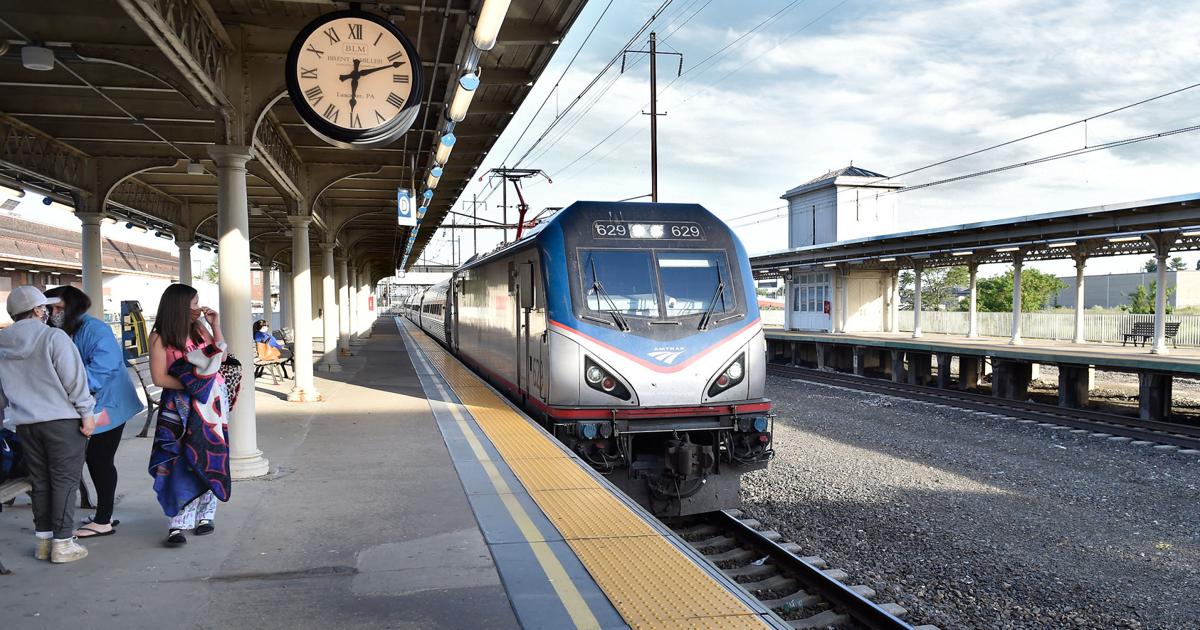Family-Friendly Guide to Navigating Train Stations with Ease
Welcome aboard, parents! ? Choo-choo-choosing to travel by train can be an exciting adventure for the entire family. Whether it’s a local commute or part of a much-anticipated vacation, train stations are bustling hubs that present a unique set of challenges – especially when you’ve got little passengers in tow! But don’t fret; we’re here to make your journey as smooth as the train gliding on rails. Let’s get on track with some helpful tips that will make navigating train stations a joy ride for you and your kids!
1. Preparing for Your Train Station Adventure
Like any successful voyage, a good start is half the battle. A little preparation can go a long way in ensuring a seamless experience from the moment you step into the train station till you reach your final destination.
- Research Your Route: Before you leave, be sure to check the train schedules, routes, and platform information. Online resources, including the train company’s official website or apps like Google Maps, can be your best friends.
- Tickets and Seating: Purchase your tickets in advance whenever possible to avoid long queues at the station. If traveling with a larger brood or for an extended period, consider reserving seats to guarantee that you’ll all be sitting together.
- Packing Essentials: Pack light but smart. Snacks, water, entertainment for the kids, and any necessary medication should be at the top of your list. Don’t forget chargers for any electronic devices and perhaps a power bank, too.
2. Safety First at the Train Station
The safety of your family is paramount when you’re amidst the hustle and bustle of a train station. With trains coming and going, and crowds of people, it’s important to stay vigilant.
- Keep Close: Make sure to hold on to your kids’ hands or have them in your sight at all times. Consider brightly colored clothing or accessories to easily spot them in a crowd.
- Stranger Danger: Teach your little ones about the importance of staying close and not talking to or going anywhere with strangers.
- Emergency Plan: In case you get separated, have a plan in place, such as a meeting point or instructions for your child to look for staff with nametags or uniforms.
3. Managing Luggage and Strollers
Handling baggage while keeping an eye on your children can be daunting, but it doesn’t have to be!
- Labeled Luggage: Ensure all bags are labeled with your contact information in case they get lost. For ease of travel, backpacks and rolling suitcases are fantastic.
- Stroller Strategy: If you need a stroller, consider a lightweight, collapsible model that’s easy to carry on and off the train.
- Storage Spaces: Look out for luggage racks close to your seating area or utilize overhead shelves for smaller items. Ensure they’re secure to prevent them from falling during the trip.
4. Keep Calm and Enjoy the Journey
Tackling train station procedures with youngsters can sometimes be hectic, but maintaining a sense of calm will help keep the family unit content and cooperative. Here are some strategies to help:
- Time Buffer: Arrive at the station with plenty of time before departure, so you aren’t rushed and can handle any unexpected delays or toilet breaks stoically.
- Entertainment: Have activities ready to keep the kids engaged while waiting for the train. Books, games, and apps can all be lifesavers during this time.
- Snack Stations: Identify spots in the station where you can grab a bite or a drink if needed, but remember to consider any dietary restrictions and avoid sugary snacks that might lead to a sugar rush!
5. Onboard the Train: Creating a Kid-Friendly Space
Once you’re aboard, making your train car environment child-friendly will allow for a more enjoyable ride for everyone. Attend to your children’s needs promptly and create a cozy corner for them to relax.
- Seat Selection: If possible, choose seats near the restrooms and away from exits for convenience and safety.
- Comfort Items: Bring along a favorite toy or blanket to help your child feel settled and content during the ride.
- Walkabouts: If the ride is long, occasionally stroll down the aisle with your child to stretch the legs and break the monotony.
Train travel should be a delightful experience for all involved, adults and children alike. With these tips, you’re well on your way to mastering the art of navigating train stations and creating wonderful memories on the rails. Stay tuned for the next part of our guide, where we’ll dive deeper into making your train journey even more magical for the little ones!

6. Plan Your Arrival: Strategize Your Station Exit
Arriving at your destination can be just as chaotic as departure if you’re not prepared. Having a strategy for when you get off the train can save you from unnecessary stress.
- Know the Exit: Familiarize yourself with the station layout before you arrive. Most train stations have maps available online you can review with your kids.
- Gather Belongings: Before the train pulls into the station, double-check that you have all your belongings — do a quick sweep beneath the seats for any dropped toys or items.
- Stroller Readiness: If you’ve used a stroller, make sure it’s ready to open up as soon as you disembark the train. This provides immediate transport for tired toddlers and a makeshift cart for lighter bags.
- Exit Sequence: Depending on the crowd, decide on an order in which you and your family will leave the train, with an adult leading and another following to shepherd children safely.
- Meeting Spot: Choose a clear meeting point outside the train in the arrival area in case anyone gets separated in the exit rush.
7. Educate and Involve Your Children
Involving your kids in the travel process not only educates them but can also turn them into little helpers and enhance their overall experience.
- Roles and Responsibilities: Assign age-appropriate tasks like carrying a small bag or being in charge of their own boarding pass.
- Travel Games: Play games related to the station or travel to keep them interested — for example, spotting different types of trains or learning about their destinations.
- Questions Encouraged: Encourage your children to ask questions and answer them enthusiastically. Their curiosity can make for educational moments.
- Station Learning: Teach them about train station signs, signals, and announcements. Not only is this good for safety, but it’s also fun and informative!
- Consideration for Others: Use this as an opportunity to teach your children about being considerate of other travelers. Sharing space, speaking with indoor voices, and walking (not running) are all good habits.
8. Stay Flexible and Adaptable
Despite all the best planning, sometimes things don’t go as expected. Trains get delayed, weather changes, or a child may not be feeling well. Adaptability is key.
- Plan B: Have an alternative plan in case of changes in train schedules or missed connections. Apps with live updates or alerts from the train company can be handy.
- Stay Positive: A positive attitude can influence your children’s behavior. If you remain calm and upbeat, they’re more likely to mirror your reaction.
- Snack Flexibility: While sugary snacks can lead to energy crashes, sometimes a little treat can help turn around a sour mood. Balance is important.
- Comfort with Changes: Explain to your children why changes have occurred and involve them in any new decision-making to help them understand and stay engaged.
- Engage with Staff: Train staff are there to help. If you need assistance or information, don’t hesitate to ask them.
Navigating train stations with your family needn’t be a daunting prospect. With some preparation, safety awareness, and the right mindset, you can steer clear of the common pitfalls and ensure your train journey is as pleasurable and exciting as the destination itself. So, climb aboard the memory-making train, and let the family adventures begin!
For more great articles please see here. For more information see here
Disclaimer
The articles available via our website provide general information only and we strongly urge readers to exercise caution and conduct their own thorough research and fact-checking. The information presented should not be taken as absolute truth, and, to the maximum extent permitted by law, we will not be held liable for any inaccuracies or errors in the content. It is essential for individuals to independently verify and validate the information before making any decisions or taking any actions based on the articles.




